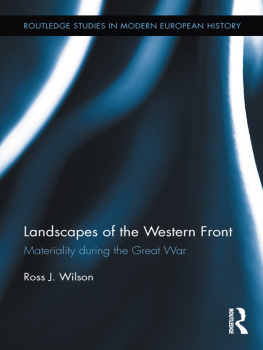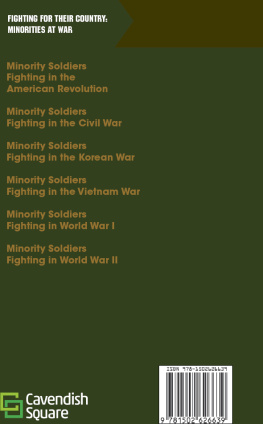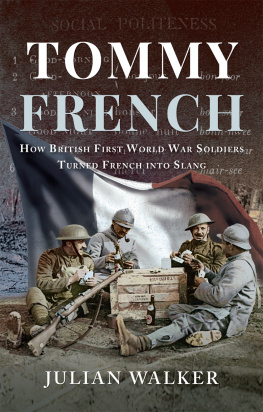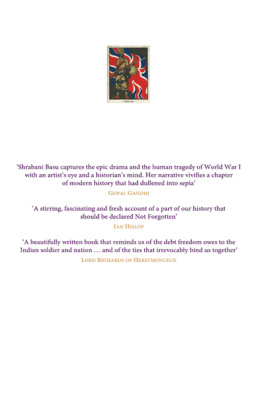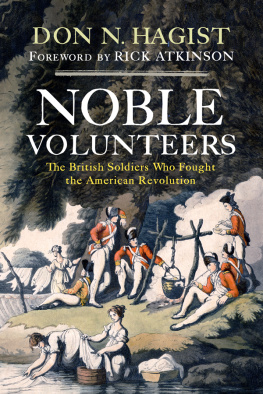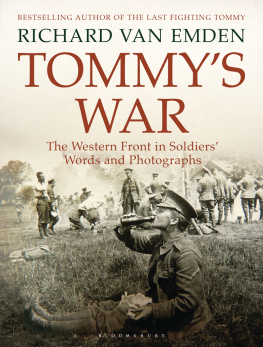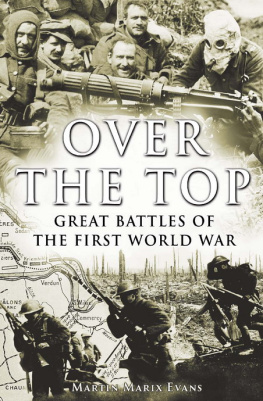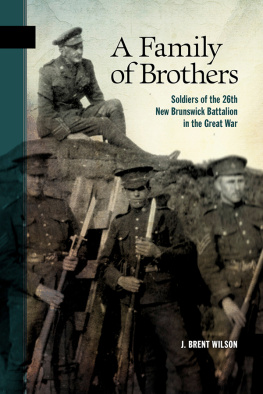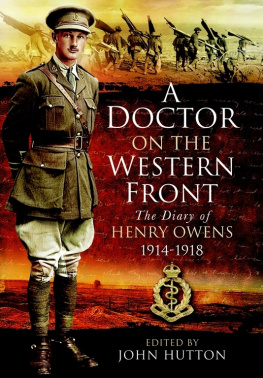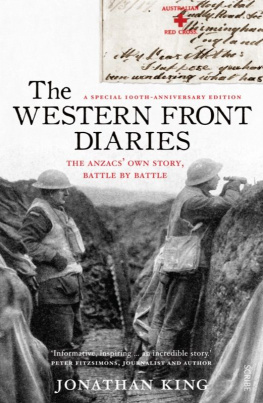Landscapes of the Western Front
Routledge Studies in Modern European History
1 Facing Fascism
The Conservative Party and the European dictators 19351940
Nick Crowson
2 French Foreign and Defence Policy, 19181940
The Decline and Fall of a Great Power
Edited by Robert Boyce
3 Britain and the Problem of International Disarmament
19191934
Carolyn Kitching
4 British Foreign Policy 18741914
The Role of India
Sneh Mahajan
5 Racial Theories in Fascist Italy
Aaron Gilette
6 Stormtroopers and Crisis in the Nazi Movement
Activism, Ideology and Dissolution
Thomas D. Grant
7 Trials of Irish History
Genesis and Evolution of a Reappraisal 19382000
Evi Gkotzaridis
8 From Slave Trade to Empire
European Colonisation of Black Africa 1780s1880s
Edited by Olivier Ptr-
Grenouilleau
9 The Russian Revolution of 1905
Centenary Perspectives
Edited by Anthony Heywood and
Jonathan D. Smele
10 Weimar Cities
The Challenge of Urban Modernity in Germany
John Bingham
11 The Nazi Party and the German Foreign Offi ce
Hans-Adolf Jacobsen and
Arthur L. Smith, Jr.
12 The Politics of Culture in Liberal Italy
From Unifi cation to Fascism
Axel Krner
13 German Colonialism, Visual Culture and Modern Memory
Edited by Volker M. Langbehn
14 German Colonialism and National Identity
Edited by Michael Perraudin and
Jrgen Zimmerer
15 Landscapes of the Western Front
Materiality during the Great War
Ross J. Wilson
Landscapes of the Western Front
Materiality during the Great War
Ross J. Wilson
First published 2012
by Routledge
711 Third Avenue, New York, NY 10017
Simultaneously published in the UK
by Routledge
2 Park Square, Milton Park, Abingdon, Oxon OX14 4RN
Routledge is an imprint of the Taylor & Francis Group, an informa business
2012 Taylor & Francis
The right of Ross J. Wilson to be identified as author of this work has been asserted by him in accordance with sections 77 and 78 of the Copyright, Designs and Patents Act 1988.
Printed and bound in the United States of America on acid-free paper by IBT Global.
All rights reserved. No part of this book may be reprinted or reproduced or utilised in any form or by any electronic, mechanical, or other means, now known or hereafter invented, including photocopying and recording, or in any information storage or retrieval system, without permission in writing from the publishers.
Trademark notice: Product or corporate names may be trademarks or registered trademarks, and are used only for identification and explanation without intent to infringe.
Library of Congress Cataloging in Publication Data
Wilson, Ross J., 1981
Landscapes of the Western Front: materiality during the Great War / by
Ross J. Wilson.
p. cm. (Routledge studies in modern European history; 16)
Includes bibliographical references and index.
1. World War, 19141918CampaignsWestern Front. 2. Great Britain. ArmyHistoryWorld War, 19141918. 3. Great Britain. ArmyMilitary lifeHistory20th century. 4. SoldiersGreat BritainHistory20th century. 5. SoldiersEuropeHistory 20th century. 6. World War, 19141918Social aspectsEurope, Western. I. Title.
D546.W517 2011
940.4144dc23
2011027136
ISBN13: 978-0-415-80805-7 (hbk)
ISBN13: 978-0-203-14322-3 (ebk)
Figures
| 1.1 |
| 2.1 |
| 3.1 |
| 3.2 |
| 3.3 |
| 4.1 |
| 4.2 |
| 4.3 |
| 4.4 |
| 4.5 |
| 4.6 |
| 4.7 |
| 5.1 |
| 5.2 |
| 5.3 |
| 5.4 |
| 5.5 |
| 5.6 |
| 5.7 |
| 6.1 |
| 6.2 |
| 6.3 |
| 6.4 |
| 6.5 |
| 7.1 |
Abbreviations
| AWA | Association for World War Archaeology |
| CWGC | Commonwealth War Graves Commission |
| IWM | Imperial War Museum |
| LC | Liddle Collection, Special Collections, Brotherton Library, University of Leeds |
| LC AIR | Liddle Collection, Air Force |
| LC: DF | Liddle Collection, Domestic Front |
| LC: GS | Liddle Collection, General Section |
| LC: WFREC | Liddle Collection, Western Front Recollections |
Acknowledgments
All books are a product of a network of associations and influences and this work is no different. My thanks and appreciation is, therefore, owed to a number of individuals and institutions who have assisted, advised and supported this project. These include the staff at Routledge, specifically Stacy Noto and Laura Stearns, who had patience through all stages of this books development. The research undertaken for Materiality during the Great War would not have been possible without the help of staff at the JBM Library (University of York), the Special Collections at the Brotherton Library (University of Leeds), the Boston Spa British Library Reading Room and the Reading Room at the Imperial War Museum (London). I would like to thank the Imperial War Museum for permission to use their images within this book and Yves Defosss and Giles Prilaux for their permission to reproduce the image of the excavated Le Point du Jour site. I am also indebted to the scholarship of Peter Liddle and Arthur J. Peacock for the collections they endowed to the University of Leeds and the University of York respectively. Throughout my academic career I have been fortunate to have received inspiration and support from scholars which has benefitted the development of my work enormously; these individuals include Dr Dominic Perring, Dr Kate Giles, Professor Julian Richards and Dr Jonathan Finch. I would also like to thank Professor Mark Edmonds and Professor Chris Gosden for their insightful assessment of my doctoral research. My particular thanks and gratitude for their time, patience, encouragement and advice are due to Dr Laurajane Smith, Professor Richard Bessel and Dr Kevin Walsh, who supervised my doctoral research on the British soldiers of the Great War. Finally, this book is for my family, whose support and love have made this work possible.
1 Introduction
There are strange Hells within the minds War made,
Not so often, not so humiliatingly afraid,
As one would have expectedthe racket and fear guns made.
(Gurney 1996: 214)
The strange Hells of the Western Front during the Great War (19141918) as experienced by the British troops are the focus of this study. The comparison between Hell and the battlefields of northern France and Belgium is often made in the popular histories of the war (see Ellis 1976). Indeed, wider public sentiment in Britain also echoes this allusion, as the Western Front is portrayed as a nightmarish, torturous arena where soldiers suffered the torments of an industrialised conflict (see Bond 2002). However, this studys use of strange Hells evokes the complicated system by which British soldiers accustomed themselves to the war zone; how they endured and found meaning within it. To be in Hell and to be not so humiliating afraid is considered within this approach as requiring the creation of a sense of place within the war landscape. This perception of place enabled troops to understand the violent, unpredictable and alien scenes they witnessed and inhabited. The product of this understanding was a war environment which held values and associations for soldiers; it was a landscape created by British troops which in turn acted upon individuals to shape the actions of the troops themselves. This specific detailing of the world the soldiers knew provides a new perspective on a conflict fought nearly a century ago. As the last of the veterans of the Western Front have now passed away the war on the Western Front has been invigorated by a wave of new studies in the field (H. Jones et al. 2008). Drawing upon these investigations, this book presents a study of the landscapes of the Western Front: an examination of the relationships between people, objects and places in the war zone.

